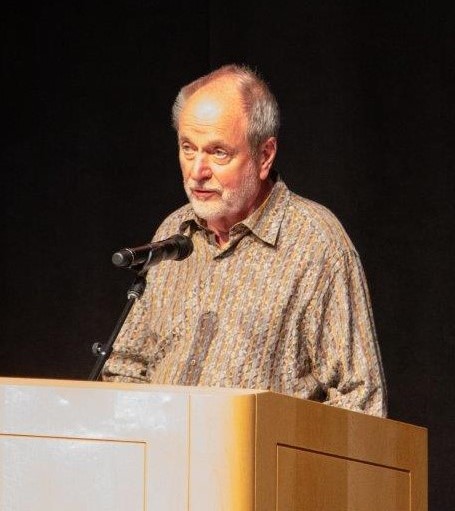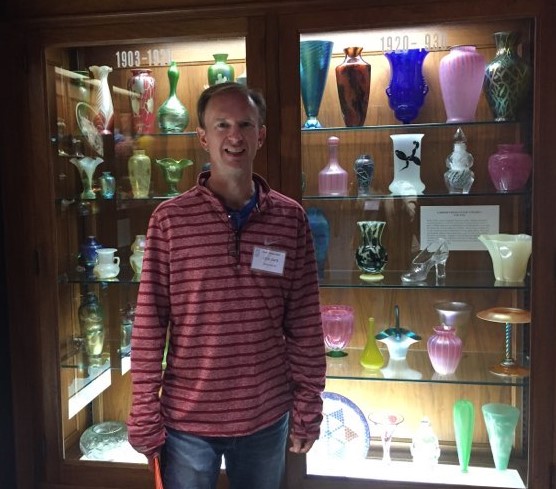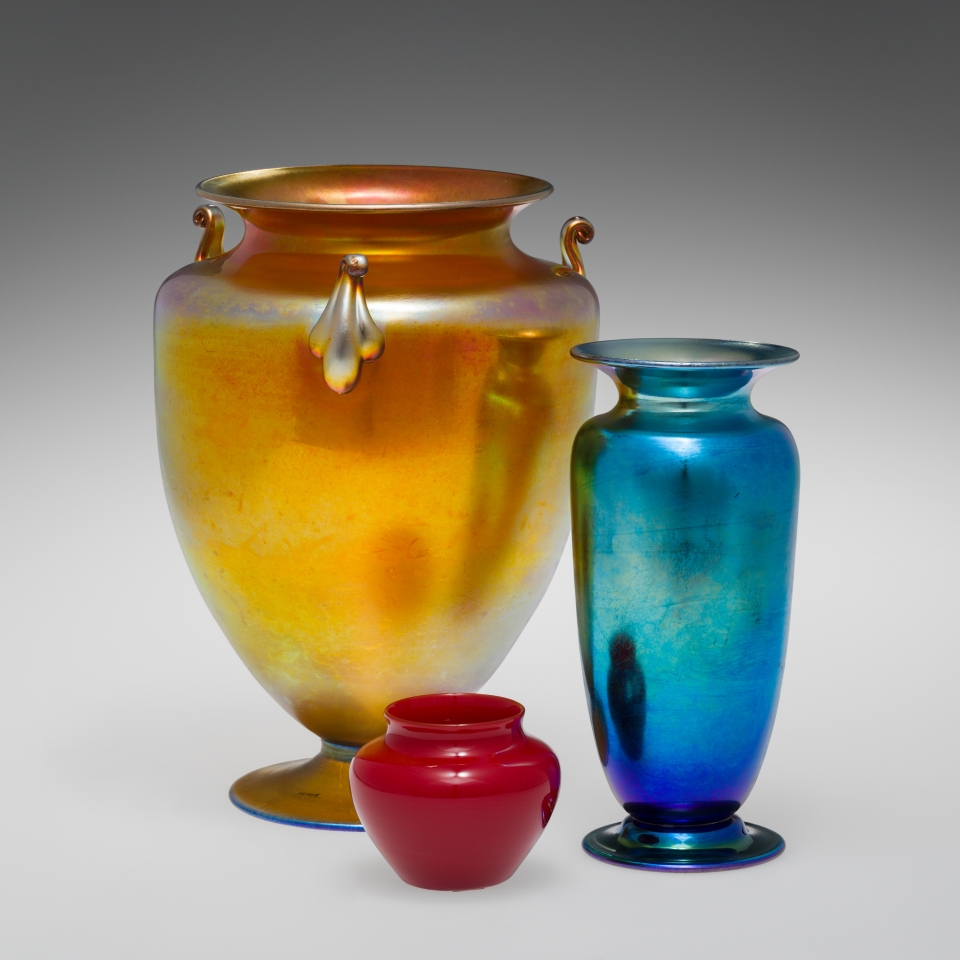2023 Symposium Presentations
2023 Symposium Presentations
Rent a presentation today, 7 days for $10.00
The Secret Plan for the Immigration of Glassworkers to Steuben
In his Glass of Frederick Carder, Paul V. Gardner writes that Carder “quietly arranged” for glassworkers to come from the Stourbridge district of England to America and that they were “denied admission” and deported. The details of this venture were largely unknown. James Measell has used contemporary newspaper coverage in Britain and the United States along with documents from the archives of the American Flint Glass Workers Union to provide the full story of this remarkable episode.
Longtime glass researcher and author James Measell has written numerous books and articles on various American glass factories and aspects of glassmaking. Since retiring from university teaching in 1997, he has been employed as historian at Fenton Art Glass in Williamstown, West Virginia. During 2010-2016, his interest in glass manufacturer Harry Northwood led him to study the Stourbridge School of Art and its impact upon the local glass industry. He is an active member of several glass clubs and currently serves as a trustee of the new Stourbridge Glass Museum.
From Etching Room to Designer: A Career at Steuben
Bolislav Manikowski’s career at Steuben began during the Carder years and continued through the transition period. As styles changed from the colorful and classical forms Carder preferred to the modern silhouettes of later Steuben, Manikowski adapted his design style. The Bolislav Manikowski Drawings and Artwork collection at the Rakow Research Library contain design drawings, blueprints, and sketches dated approximately from 1930-1936 as well as undated designs. Using these materials as well as information from other sources including the Frederick Carder Papers, Allie will illustrate the trajectory of Manikowski’s time at Steuben.
Allie Shanafelter is a reference librarian at the Rakow Research Library. You may recognize her if you visit the library often. She often works at the reference desk and may have helped you find a book in the past. She graduated from Drexel University with a degree in library science and has worked for the Rakow Research Library for 3 years.
Assignment in Glassmaking – Live Comments by David Dowler
In 1978, award-winning photojournalist Elliott Erwitt filmed a documentary at the Steuben Glass Factory tracing the development of three major glass sculptures from design meeting to completed, handmade masterworks. Steuben designers Donald Pollard, David Dowler and Lloyd Atkins were featured along with commentary by Thomas Buechner, President of Steuben Glass at the time. Attendees will view the film with live introductory and closing remarks by David Dowler, former artist-designer at Steuben.
David Dowler had a 35-year career as an artist-designer at Steuben. His portfolio includes unique sculpture and over 200 production designs, many of which are widely recognized. David is a resident of Corning NY and lives in Frederick Carder’s home. He maintains a metal sculpture studio in Corning.
Glass: Clearly Intriguing
All of us are familiar with glass in many different forms, from collectible art glass to the utilitarian objects we use each day. But how much do you really know about glass and why it behaves the way it does? In this talk, Dr. Chris Dartt will break down the science of glass and its properties. He’ll walk through the history of glass innovation, answer some of the questions that you’ve perhaps pondered, and explain in simple terms some of the complex chemistry that makes today’s glass one of the most amazing materials that you encounter in daily life.
Chris Dartt earned his PhD in Chemical Engineering from Caltech, where he worked with some of the same elements found in glass in the form of titanosilicate zeolite catalysts. In this work the goal was to make ordered, repeating silica structures, and if an amorphous solid was ever produced it meant the experiment was a failure. Happily, he now enjoys amorphous silicon in the beauty of Steuben glass. After working on chemical research for several years, Chris became a high school chemistry teacher. He loves to understand the chemistry of how things are made, and to share this knowledge with others. Chris and his wife have collected Steuben for 25 years. Chris is so inspired by glass he wears some on his face and drinks adult beverages from it as well!
A Brief History of the Dorflinger Glass Companies and the Glass They Produced
Founded by a young immigrant glassblower named Christian Dorflinger, the Dorflinger glass companies operated in Brooklyn, New York and White Mills, Pennsylvania from 1852 until 1921, producing luxury cut and engraved glass tableware for the White House, foreign governments, and wealthy Gilded Age families. Although perhaps best known for the rich cut and engraved glassware popular during the American Brilliant Period, the Dorflinger companies also produced several innovative art glass lines beginning in the early 1900s. These include color cased, acid cut, and gold decorated cameo glass, the acid-etched floral Kalana line, the solid pastel color blown glass Reproduction Venetian line, and the Opal Glass line. Jim will provide a history and overview of the glass Dorflinger produced.
Jim Asselstine retired in 2013 after a 40-year career in government and the financial services industry. He is a resident of Tyler Hill, PA, and is the founder, president, and director of the Dorflinger Factory Museum in White Mills, PA. Jim is an avid student of the history of the Dorflinger companies and is a frequent lecturer on the Dorflinger companies and the glass they produced. He is a past trustee and chairman of the Dorflinger-Suydam Wildlife Sanctuary, which owns and operates the Dorflinger Glass Museum. Jim is also a past president of the American Cut Glass Association, and a past president of the Fellows of the Corning Museum of Glass.
Member’s Spotlight – Some of My Favorite Things
Member collectors in this Collector’s Choice presentation will share some of their favorite glass pieces and stories. Participants include Mike Moline, Sue and Steve Maynard, Beth Shaut, Dwight and Jeanette Little, Gordon Hancock and others.





